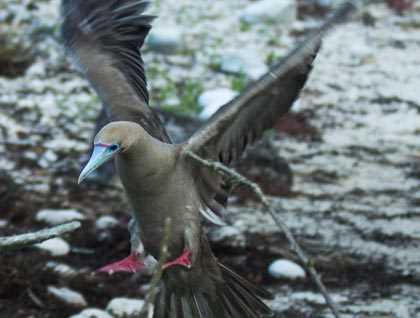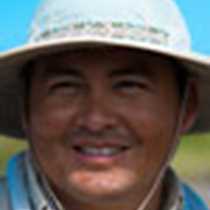The early morning light gives as a very good opportunity to see the walls of the crater that collapsed a few million years ago, the most interesting scenery of the week…the very center of a caldera that makes Tower Island. Located up in the northernmost part of the archipelago, quite a distant from any of the central islands, this particular place is extremely interesting. Isolation has been the key here for sea birds, and they are the most numerous inhabitants of the place. Land reptiles, on the other hand, have not made it here yet, leaving ecological niches still open.
Swallow tailed gulls, Nazca boobies, and the very colorful red footed boobies together with the contrasting landscape, give this place a special kind of atmosphere. The white coralline beach and the red mangroves are the island’s nesting place for red footed boobies. Minor frigate bird males today are into being seen by the females, we saw a few inflated pouches and had a wonderful chance to photograph them from up close.
Prince Philip’s Steps and its lava plateaus that have been conquered by Palo Santo trees on this side of the island is the nesting territory for more boobies. As we head for a walk in the open area we find ourselves surrounded again by lava flows, and here they are the territory of thousands of storm petrels that are covering the sky. At a first glimpse they look like clouds of mosquitos that are often found in jungle areas. It is incredible to see how much activity can be found in this bizarre distant place. As the petrels come here to nest, their predator the short eared owl quietly awaits them in the open fields, looking for the perfect time to attack.
The images of today we are sure will remain in our heads for the rest of our lives. What a special way to end this expedition!










